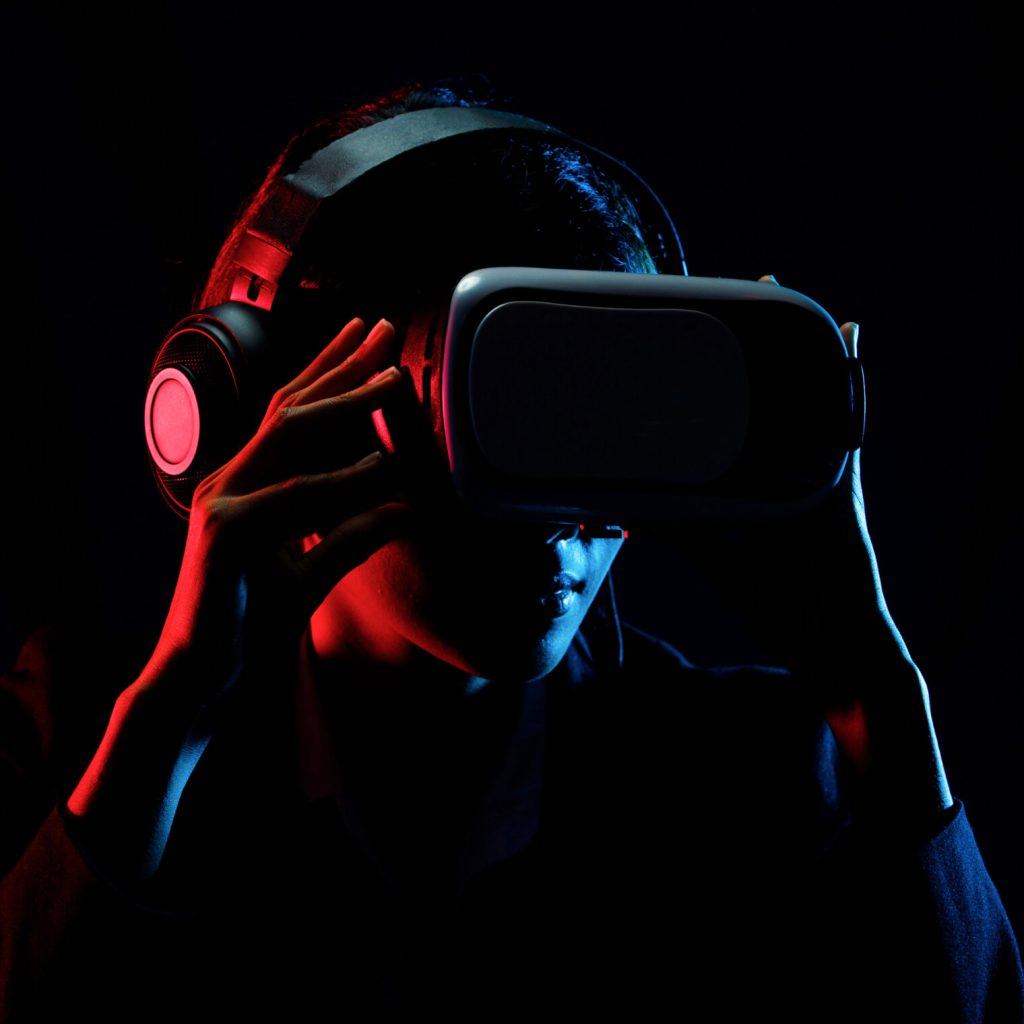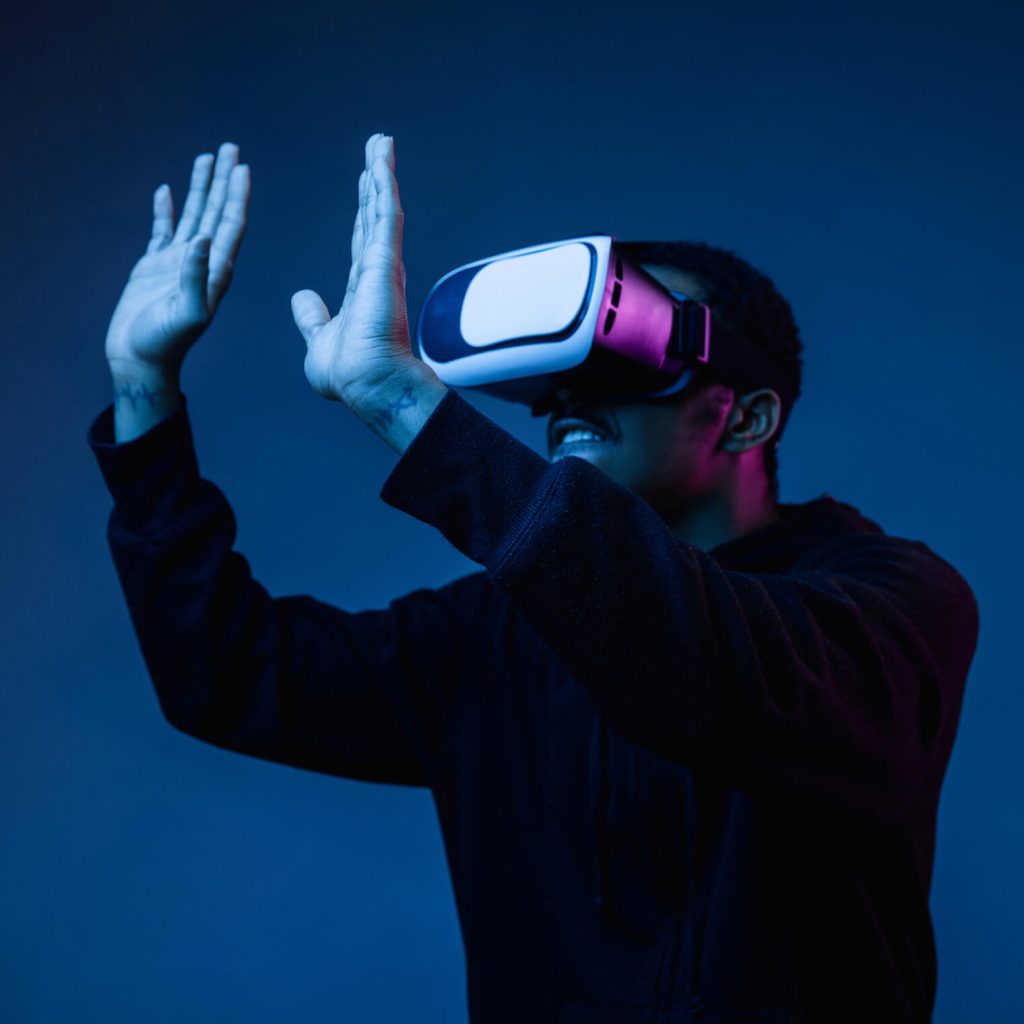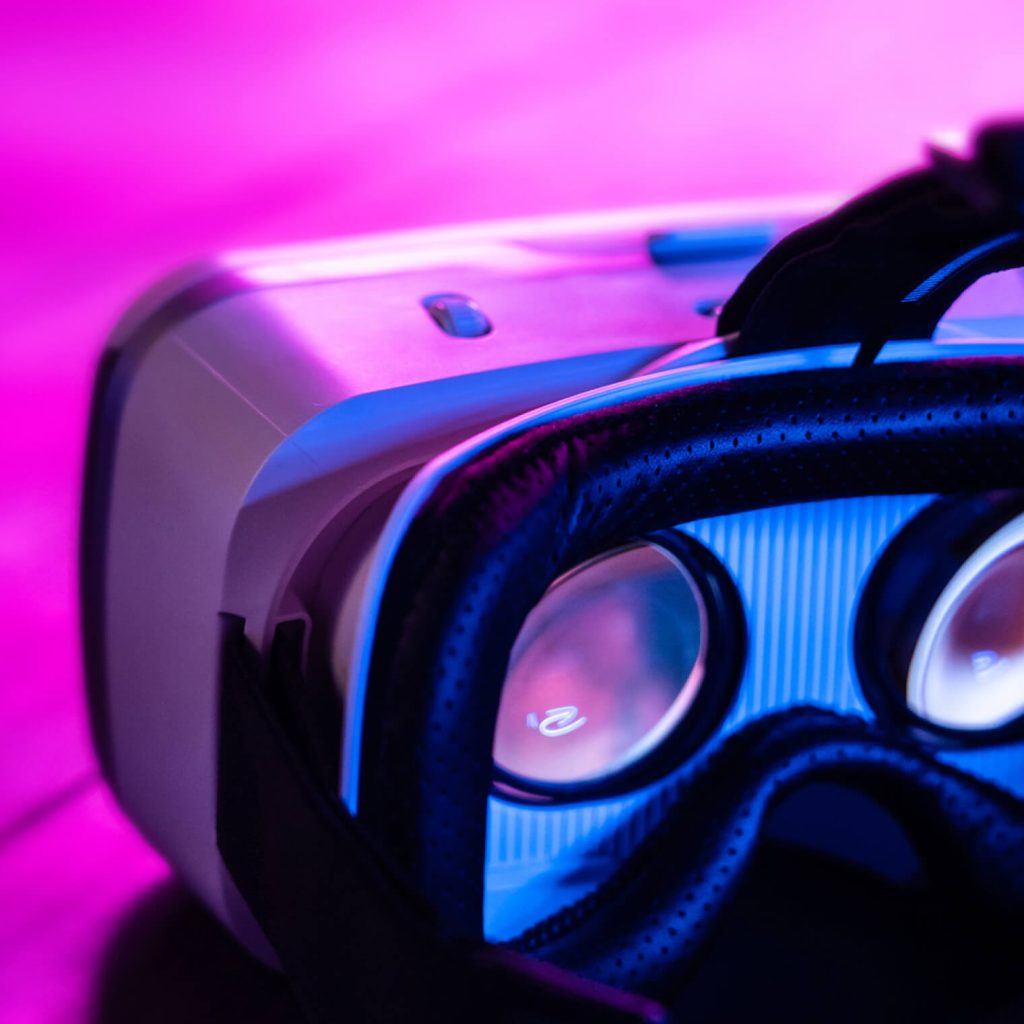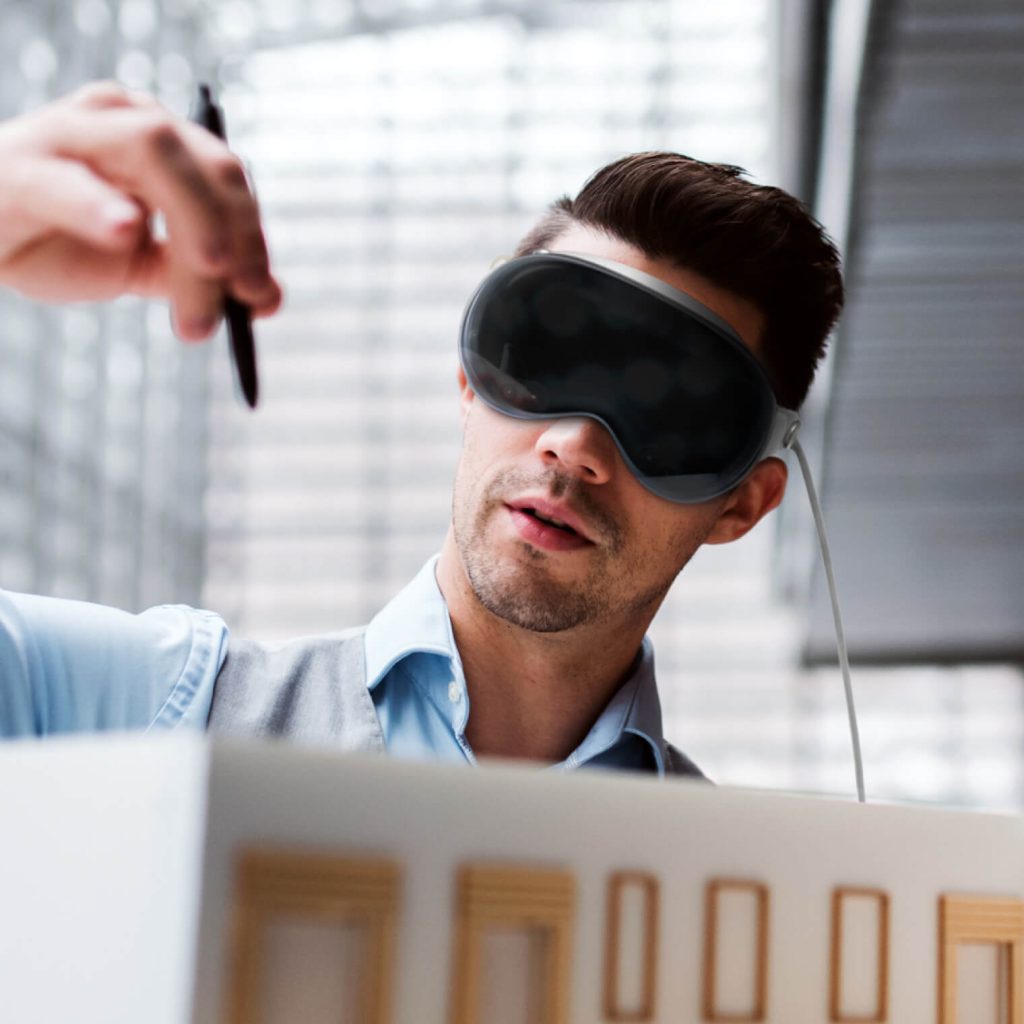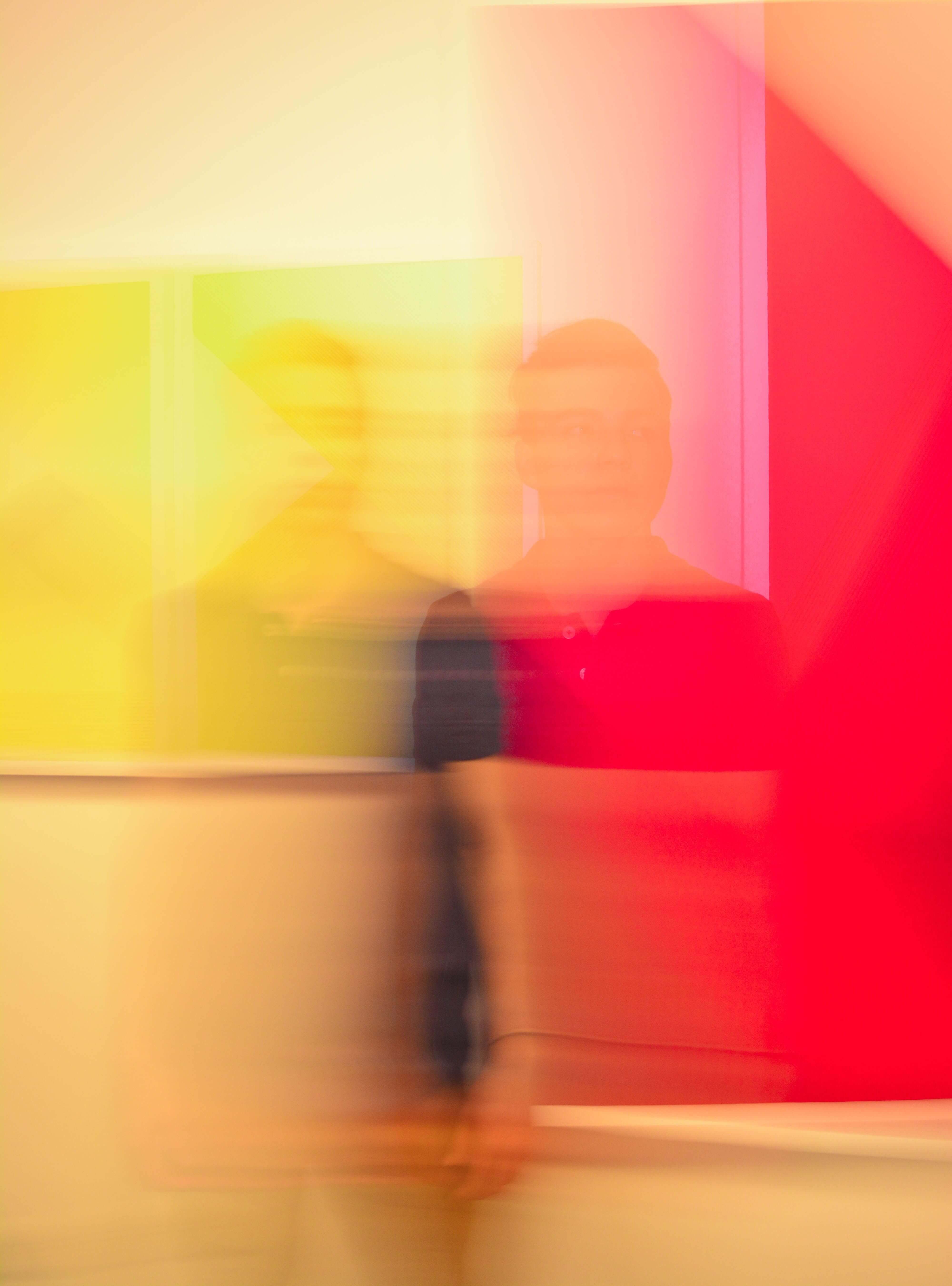
So, it is interesting to compare the value of VR vs AR and other options and clarify how companies can capitalise on these technologies. Each XR solution has unique capabilities that can drive innovation, improve efficiency, and enhance user experiences. With a view to providing clarity over the options available on today’s market, we’ve compared VR vs AR and other extended reality technologies, focusing on their meaning for businesses.
- Extended reality technologies are reshaping how businesses operate and engage with customers.
- VR immerses users in digital worlds for simulations, AR adds digital elements to the real world, and MR blends real and virtual elements.
- Early adoption of XR gives businesses a competitive advantage through improved efficiency.
VR: from gaming consoles to corporate solutions
Every mainstream concept of VR requires a device, usually a headset or eyewear, to produce a computer-generated environment. It is hard to ignore its use and promotion by gaming titans like PlayStation and Oculus, but there are plenty of other areas where VR is being applied. Automotive firms have led the adoption of VR through its use within product visualisation, where designers and engineers in automotive software engineering can review a car's design, usability, and functionality before construction. Customers can also enjoy using VR solutions to experience a realistic, vivid feel of their future car before buying one.
A similar tactic is used by healthcare professionals in examining a virtual human body, which prevents any unwanted learning curves when taking on a real-life case. Medical students can practice complex procedures in risk-free virtual environments before working with real patients. Education represents another frontier for VR technology, with immersive learning experiences allowing students to visit historical sites, explore the human body from the inside, or conduct virtual chemistry experiments. This hands-on approach has shown promise in boosting engagement and knowledge retention.
Businesses are using VR to sell more products and services. Consider its use across fields like retail, real estate, or tourism, where holidaymakers can review a location or hotel before deciding whether it is right for them.
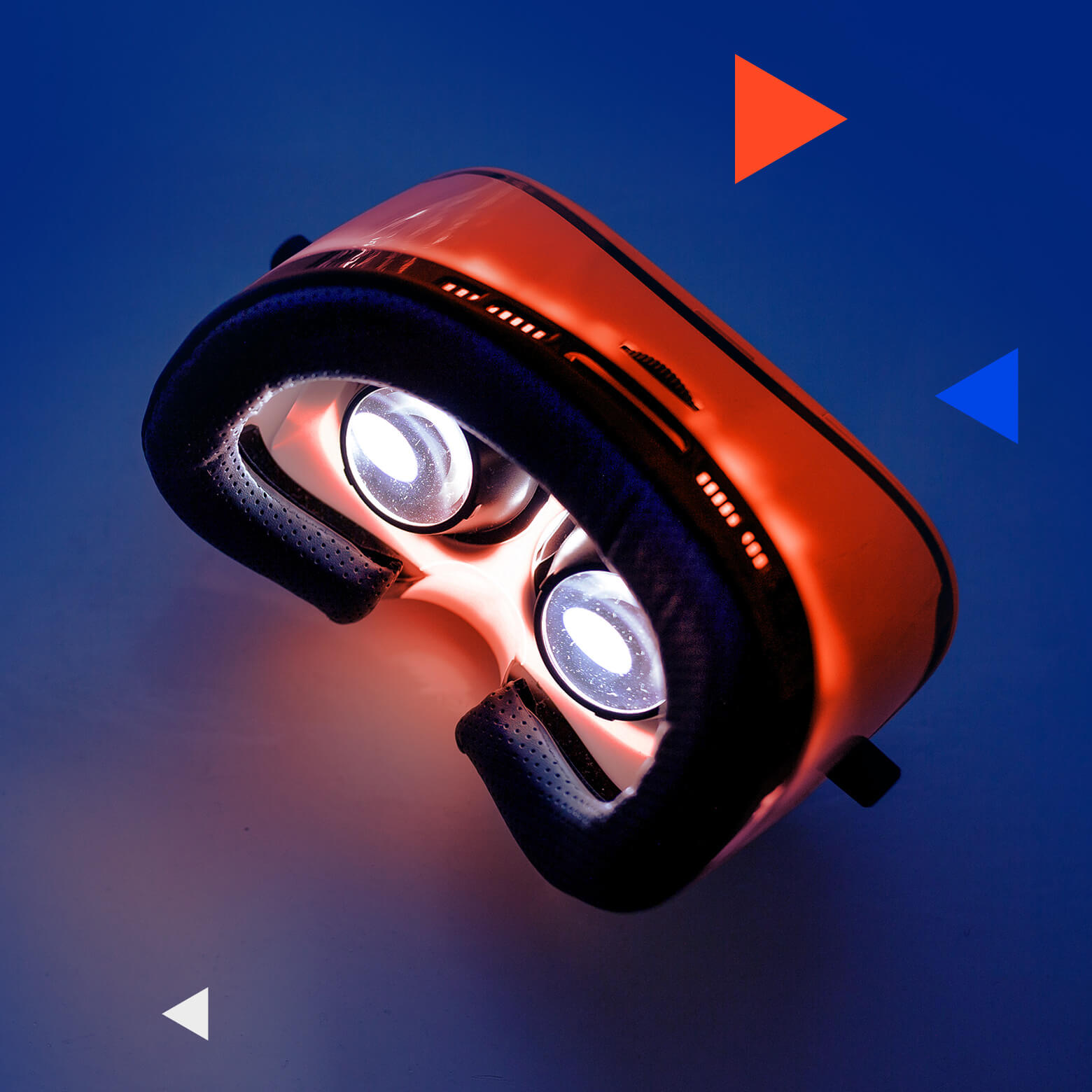
AR: bridging the digital and real worlds
As opposed to VR’s construction of a virtual environment, augmented reality (AR) blends digital content with a real-world view. The success of ‘Pokemon Go’ and demise of Google Glass have massively impacted recognition for AR, although businesses have long known of its potential.
Take its use by Spotify in allowing consumers to listen to music by holding their phones up to Coca Cola products, or Argos’s unleashing of rich product information and one-click ordering via the scanning of items. Retail could be the next industry to take a huge leap with AR by allowing its customers to place items like homeware within a fictional setting using retail software.
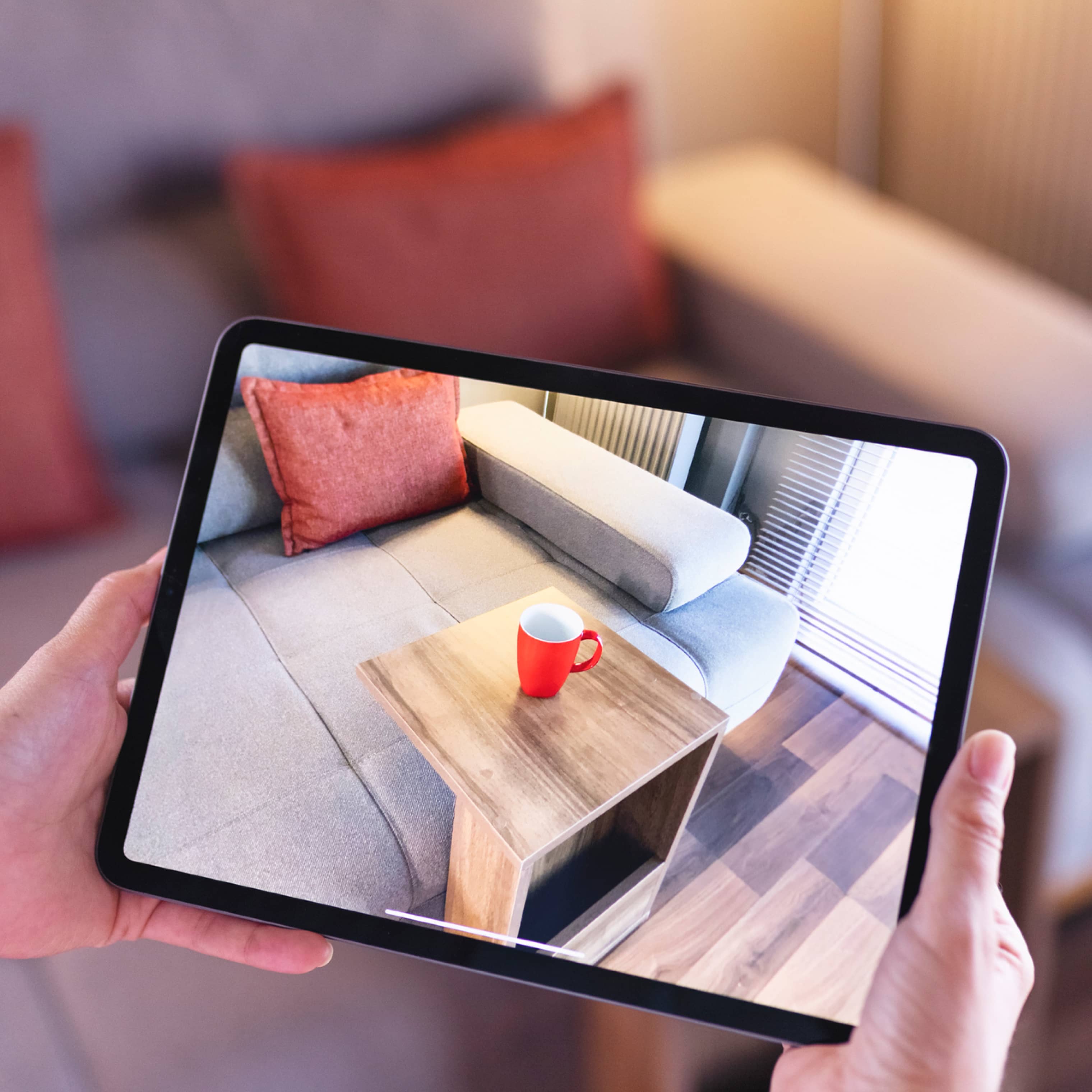
MR: where the virtual meets reality
MR is an overlay of synthetic content on a real-life image. Though similar to AR, the mixed version sees digital elements interacting with those in the real world.
Healthcare could be a key adopter of MR. Microsoft’s ‘Hololens’ device, which is being used within University College London to generate anatomical holograms for the planning of complicated procedures. Of interest to developers could be floating user interfaces which allow for the manipulation of data via hand motions. These would utilise MR to connect information with an operator. Below you can see how Hololens can aid retailers, used as a handy tool for in-store inventory management.
Cinematic reality: immersive experiences for healthcare and beyond
Siemens Healthineers has launched an app designed for Apple Vision Pro that enables users such as surgeons, medical students, or patients to view immersive, interactive holograms of the human body captured through medical scans in their real-world environment. Visualizing the renderings through the app could assist in surgical planning and medical education, or help patients visualize procedures. The Cinematic Reality app is now available on the Apple App Store. Furthermore, visitors to the HIMSS trade show in Orlando, Florida, will have the chance to experience it in person at the Siemens Healthineers booth from March 12 to 14.
“Cinematic Reality gives people the opportunity to immerse themselves in a world of photorealistic renderings of the human anatomy. Apple Vision Pro perfectly presents that three-dimensional experience, combined with great flexibility and standalone use. We see great potential for the technology for clinical as well as educational purposes,” said Christian Zapf, head of Digital and Automation at Siemens Healthineers.
Conclusion
Extended reality technologies evolve rapidly, shifting from niche to mainstream use. We already see them conquering domains beyond entertainment and gaming. Within healthcare, automotive, advertising, education, and retail, VR, AR, and MR are applied to enhance customer experience and lower the risks associated with real-world trials. The best action for businesses is to see where these can impact their own workings and let the testing commence.
As XR technology advances, its integration with artificial intelligence, is further expanding its capabilities, making applications more seamless and immersive. Advancements in hardware and software development are making XR technologies increasingly accessible to businesses of all sizes. With growing investments and increasing adoption, organisations that embrace XR early can gain a competitive edge. The key is to stay informed, experiment with emerging trends, and adapt strategies to maximise the benefits of this rapidly evolving technology.

FAQs
AR (Augmented Reality) overlays digital content onto the real world, VR (Virtual Reality) immerses users in a fully digital environment, and MR (Mixed Reality) combines both, allowing real and virtual elements to interact.
No, AR overlays digital content onto the real world without interaction. MR goes further by allowing digital and real objects to interact in real time.
Related Insights

